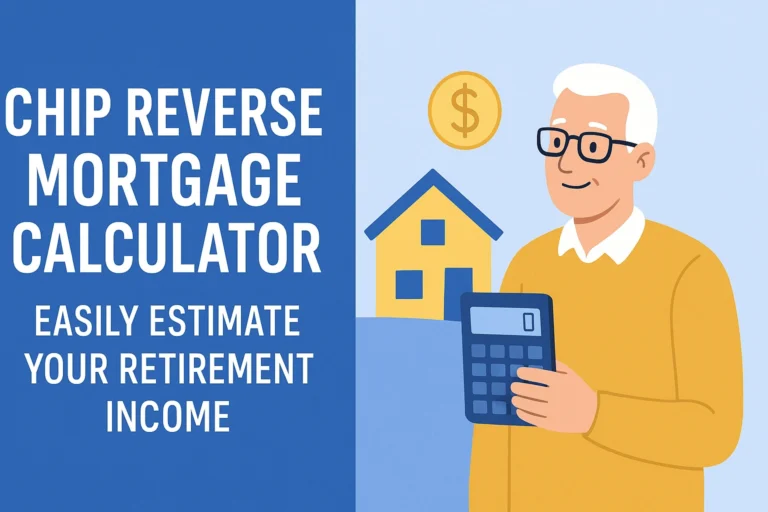Investing in real estate across borders requires clarity — especially when comparing financial commitments in two distinct markets like the USA and Canada. A mortgage loan calculator designed for both countries can help you estimate payments, compare costs, and plan with confidence — whether you’re a local buyer or an international investor.
This guide walks you through the key differences in mortgage rules, hidden costs, and practical scenarios — so you can make informed decisions based on real numbers, not assumptions.
Key Takeaways
- Compare mortgage structures between the USA and Canada to align with your investment goals.
- Use a cross-border mortgage calculator to estimate monthly payments, total interest, and affordability.
- Understand how down payments, interest rates, and insurance differ — and how they impact your bottom line.
- Factor in property taxes, HOA or strata fees, and currency risks for a complete financial picture.
- Customize your inputs — loan amount, term, rate — to reflect your unique situation.
Understanding Mortgage Investments in North America
Real estate in the USA and Canada operates under different lending rules, tax frameworks, and market dynamics. For investors — especially those without local residency or credit history — navigating these systems can feel overwhelming. But with the right tools and knowledge, it becomes manageable.
The Current Real Estate Landscape
In the USA, mortgage rates fluctuate with Federal Reserve policy, and loan terms are often longer (up to 30 years). In Canada, rates are tied to the Bank of Canada’s prime rate, and amortization is typically capped at 25 years for insured mortgages.
Market conditions also vary: some US cities offer high rental yields but volatile appreciation, while Canadian markets may offer stability but stricter lending rules for non-residents.
Why a Mortgage Calculator Matters
A mortgage calculator isn’t just about monthly payments. It’s a planning tool that helps you:
- Compare outcomes under different rate or down payment scenarios.
- Understand how amortization affects long-term interest costs.
- Model side-by-side investments in Austin vs. Toronto, Miami vs. Vancouver.
For international buyers, a calculator that reflects country-specific rules is essential — because a $500,000 property doesn’t cost the same everywhere.
Key Differences in USA and Canada Mortgage Rules

Down Payment Requirements
- USA: Conventional loans often require 20% down to avoid PMI. FHA loans allow as low as 3.5% — but these are rarely available to non-residents.
- Canada: Minimum 5% down for homes under $500,000 — but non-residents often face 20–35% minimums, depending on the lender and property type.
Interest Rates and Loan Terms
- USA: Fixed-rate mortgages dominate, especially 30-year terms. Adjustable-rate mortgages (ARMs) are also common.
- Canada: Most borrowers choose 5-year fixed or variable rates. Full amortization is usually 25 years — 30 years only if the down payment exceeds 20%.
Mortgage Insurance: PMI vs. CMHC
- USA: Private Mortgage Insurance (PMI) applies if down payment is under 20%. It’s based on credit score and loan-to-value.
- Canada: CMHC (or private insurer) premiums apply for down payments under 20%. Premiums are added to the loan amount and range from 2.4% to 4% of the mortgage.
Property Taxes and Ongoing Costs
- USA: Property taxes vary widely by state and county — often 1–3% of home value annually. HOA fees can add hundreds per month.
- Canada: Municipal property taxes are typically lower (0.5–1% of value). Strata fees in condos vary by building amenities and location.
How to Use a Cross-Border Mortgage Calculator
Our calculator is built for investors comparing opportunities in both countries. Here’s how to get the most accurate results:
Essential Calculator Features for Cross-Border Comparisons
- Currency Conversion: Automatically converts between USD and CAD for accurate comparisons.
- Country-Specific Rules: Reflects distinct mortgage regulations and rate structures.
- Customizable Inputs: Adjust loan terms, rates, and down payments to match your scenario.
How to Switch Between USA and Canadian Mortgage Calculations
Switching between countries is simple. Select your target market to view relevant estimates, including monthly payments and total interest over the loan term.
| Feature | USA Mortgage | Canadian Mortgage |
|---|---|---|
| Typical Down Payment | 20% | 5%-20% |
| Interest Rate Type | Fixed/Adjustable | Fixed/Variable |
| Average Closing Costs | 2%-5% of loan amount | 1.5%-4% of loan amount |
Interpreting Calculator Results for Better Investment Decisions
Understanding the output helps investors compare opportunities. Results include monthly payments, total interest, and cost breakdowns under different scenarios. This information supports side-by-side evaluations of USA and Canadian investments.
Use our mortgage loan calculator to explore cross-border investment scenarios with confidence.
Real Investment Scenarios: Side-by-Side Comparisons
$500K Home: Toronto vs. Austin Monthly Payment Breakdown
Consider a $500,000 home in Toronto and Austin. Down payment requirements may differ — Toronto may require 35% for non-residents, while Austin may offer flexibility based on loan type.
Interest rates also vary. A Canadian 5-year fixed rate at 5.5% differs from a US 30-year fixed rate at 6.5%. These differences directly impact monthly obligations.
Investment Property Returns: Canadian vs. American Markets
Rental income, appreciation, and tax rules affect returns. In Canada, rental income is taxable, and non-residents face withholding requirements. In the US, FIRPTA may apply, requiring withholding at sale.
A calculator that includes these factors helps compare net returns. For example, a Toronto property may yield 4% rental return, while Austin may yield 5% — but net outcomes depend on costs and taxes.
Foreign Buyer Case Study: Investing Without Credit History
Buyers without local credit history face unique considerations. In Canada, alternative documentation like income or asset proof may be accepted. In the US, some lenders offer specialized programs, often requiring larger down payments.
For example, a Toronto investment may require 40% down without credit history, while Austin may accept 30% through a specialized lender. A calculator helps estimate payments under these conditions.
Hidden Costs and Foreign Buyer Considerations
Cross-border investment involves more than mortgage payments. Additional costs should be factored into planning.
Beyond the Mortgage: HOA, Strata, and Maintenance Fees
Property ownership often includes recurring fees. HOA fees in the USA and strata fees in Canada cover shared space maintenance. These vary by property and amenities.
- HOA fees: Typically range from a few hundred to several thousand annually.
- Strata fees: Vary based on building type and services.
- Maintenance costs: Essential for long-term property value.
Closing Costs and Legal Requirements for International Investors
Closing costs include legal fees, title insurance, and administrative expenses. These vary between countries and should be reviewed with a local professional.
Currency Exchange Impact on Cross-Border Investments
Exchange rate fluctuations can affect mortgage payments and returns. Investors may consider hedging strategies to manage exposure.
Understanding these factors supports more accurate financial projections.
Conclusion: Making Informed Cross-Border Investment Decisions
Using a mortgage loan calculator for USA and Canada can help investors evaluate key differences in mortgage rules, interest rates, and property costs. By comparing side-by-side scenarios, investors gain clarity on monthly obligations, returns, and hidden expenses.
This tool supports strategic planning and helps align investments with long-term financial objectives in either market.
Try Our Mortgage Loan Calculator
Use our free tool to compare mortgage scenarios in the USA and Canada. Adjust down payments, interest rates, and terms to see how they impact your investment.
Calculate your mortgage nowFrequently Asked Questions
How do I use a mortgage loan calculator for international buyers?
Input the property price, down payment, interest rate, and loan term. The calculator will estimate your monthly payment and total cost based on your selected country’s typical rules.
What is the difference between a USA and Canada mortgage calculator?
A USA calculator follows US lending norms (e.g., PMI, 30-year terms), while a Canada calculator reflects Canadian rules (e.g., CMHC insurance, 5-year fixed rates, stress tests).
Can I use a mortgage calculator if I’m not a resident?
Yes. Many calculators allow non-residents to estimate payments. You may need to adjust inputs for higher down payments or different rate assumptions.
How do I calculate my mortgage payments as a foreign national?
Use a calculator that allows customization of down payment (often 30-40% for non-residents) and interest rates. Some tools offer “foreign buyer” modes for more accurate estimates.
What are the mortgage options for international investors in the USA and Canada?
Options include conventional loans, private lending, or specialized non-resident programs. Rental income may be considered in some cases. Use a cross-border calculator to compare.
Can I buy a property in the USA or Canada without local credit history?
Yes, but you may need to provide alternative documentation (bank statements, asset proof) or make a larger down payment. Lender policies vary.
How do currency exchange rates impact my cross-border investment?
Fluctuations can affect mortgage payments (if paid in foreign currency) and sale proceeds. Consider consulting a currency specialist to manage risk.
What are the hidden costs of buying property in the USA or Canada?
Include property taxes, insurance, HOA/strata fees, maintenance, legal fees, and closing costs. These can add 1.5–5%+ to your total investment.
How do I compare mortgage rates in the USA and Canada?
Use a cross-border mortgage calculator. Input the same loan amount and term for both countries to see how rates, insurance, and fees affect your monthly payment.
Disclaimer
The estimates provided by this tool are for informational purposes only and should not be considered financial, legal, or tax advice. Mortgage rules, interest rates, and eligibility criteria vary by lender, province, state, and individual circumstances — and can change without notice. Always consult a licensed mortgage professional, financial advisor, or tax specialist before making any investment decisions.





